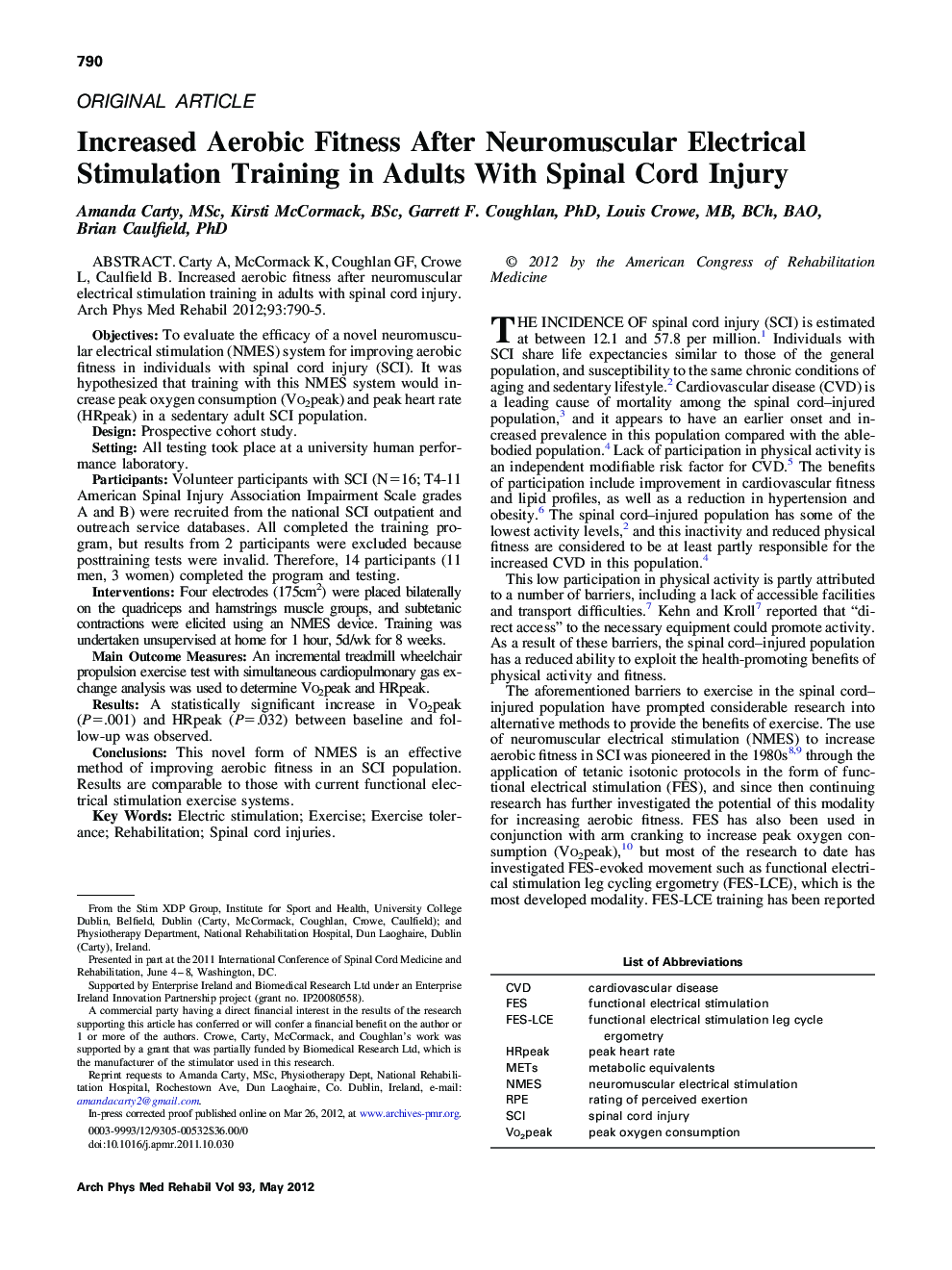| Article ID | Journal | Published Year | Pages | File Type |
|---|---|---|---|---|
| 3450168 | Archives of Physical Medicine and Rehabilitation | 2012 | 6 Pages |
Carty A, McCormack K, Coughlan GF, Crowe L, Caulfield B. Increased aerobic fitness after neuromuscular electrical stimulation training in adults with spinal cord injury.ObjectivesTo evaluate the efficacy of a novel neuromuscular electrical stimulation (NMES) system for improving aerobic fitness in individuals with spinal cord injury (SCI). It was hypothesized that training with this NMES system would increase peak oxygen consumption (Vo2peak) and peak heart rate (HRpeak) in a sedentary adult SCI population.DesignProspective cohort study.SettingAll testing took place at a university human performance laboratory.ParticipantsVolunteer participants with SCI (N=16; T4-11 American Spinal Injury Association Impairment Scale grades A and B) were recruited from the national SCI outpatient and outreach service databases. All completed the training program, but results from 2 participants were excluded because posttraining tests were invalid. Therefore, 14 participants (11 men, 3 women) completed the program and testing.InterventionsFour electrodes (175cm2) were placed bilaterally on the quadriceps and hamstrings muscle groups, and subtetanic contractions were elicited using an NMES device. Training was undertaken unsupervised at home for 1 hour, 5d/wk for 8 weeks.Main Outcome MeasuresAn incremental treadmill wheelchair propulsion exercise test with simultaneous cardiopulmonary gas exchange analysis was used to determine Vo2peak and HRpeak.ResultsA statistically significant increase in Vo2peak (P=.001) and HRpeak (P=.032) between baseline and follow-up was observed.ConclusionsThis novel form of NMES is an effective method of improving aerobic fitness in an SCI population. Results are comparable to those with current functional electrical stimulation exercise systems.
